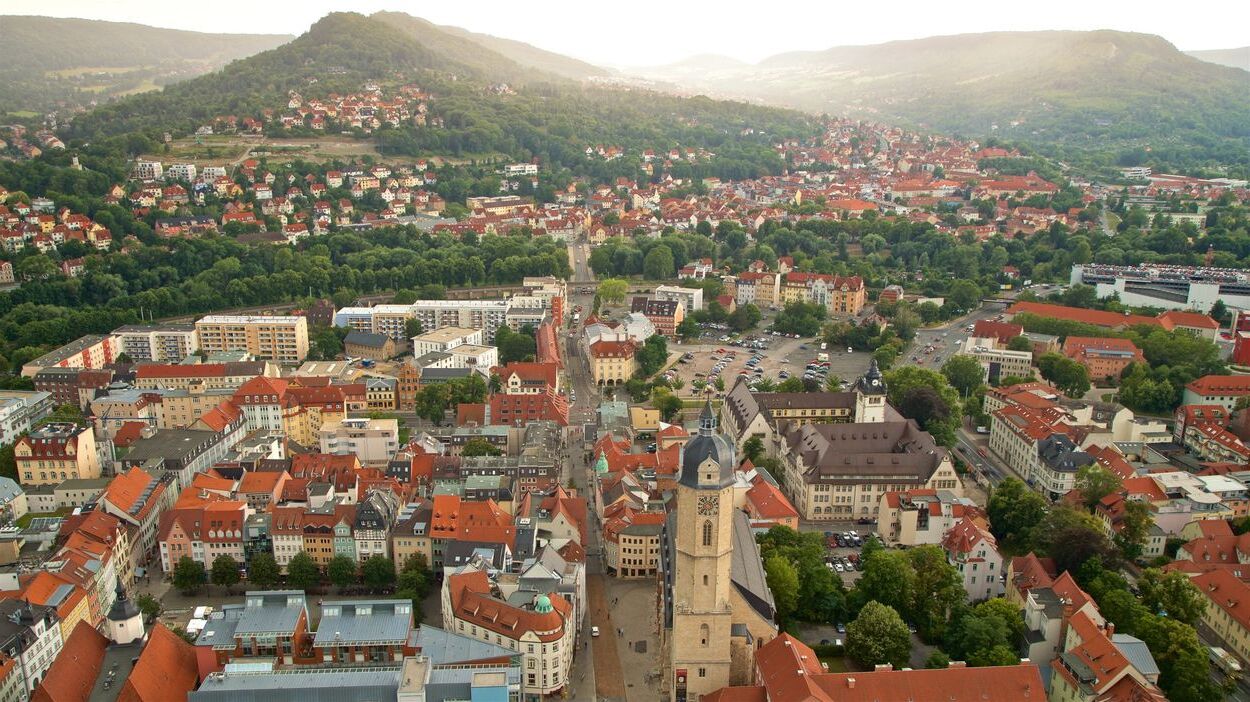
Ever wondered about the hidden gems of Germany? Thuringia, nestled in the heart of the country, is a treasure trove of history, culture, and natural beauty. With its dense forests, historic towns, and rich cultural heritage, this state offers a unique blend of attractions. From the bustling streets of Erfurt to the serene Thuringian Forest, there's something for everyone. Home to iconic figures like Johann Sebastian Bach and Martin Luther, Thuringia boasts a legacy that continues to influence the world. Whether you're a history buff, nature lover, or culture enthusiast, Thuringia promises an unforgettable experience. Ready to explore? Let's dive in!
Key Takeaways:
- Thuringia, the Heart of Germany, is a small but culturally rich state with a fascinating history, famous residents, and beautiful landscapes, making it a must-visit destination for history and nature enthusiasts.
- From famous residents like Bach and Luther to its stunning UNESCO World Heritage sites and traditional crafts, Thuringia offers a unique blend of history, culture, and natural beauty that captivates visitors from around the world.
Thuringia: The Heart of Germany
Thuringia, officially known as the Free State of Thuringia, is a central German state rich in history, culture, and natural beauty. Let's dive into some fascinating facts about this unique region.
Location and Geography
Thuringia's central location in Germany makes it a significant cultural and historical hub.
-
Location and Geography: Thuringia is bordered by Bavaria, Hesse, Lower Saxony, Saxony-Anhalt, and Saxony. It covers 16,171 square kilometers, making it the sixth smallest state in Germany by area.
-
Capital City: Erfurt, the capital and largest city, is famous for its historic landmarks like the Erfurt Cathedral and the Krämerbrücke, a bridge lined with half-timbered houses.
-
Population: With around 2.1 million residents, Thuringia is the fifth smallest German state by population.
Historical Significance
Thuringia's history is long and complex, marked by significant events and figures.
-
History: The Frankish Duchy of Thuringia was established around 631 AD by King Dagobert I. The modern state formed in 1920 through the merger of the Ernestine duchies, except for Saxe-Coburg. After WWII, it became part of the Soviet occupation zone and later the German Democratic Republic (GDR). Thuringia was re-established in 1990 following German reunification.
-
Geographical Features: Known for its dense forests, particularly the Thuringian Forest (Thüringer Wald), the state also includes parts of the Harz mountains. The Großer Beerberg, at 982 meters, is the highest peak in the Thuringian Forest.
Cultural Heritage
Thuringia has been home to some of the most influential figures in German history and culture.
-
Cultural Heritage: Johann Sebastian Bach, Martin Luther, Johann Wolfgang von Goethe, and Friedrich Schiller all have strong ties to Thuringia. Goethe and Schiller lived and worked here, leaving a lasting cultural impact.
-
UNESCO World Heritage Sites: Thuringia boasts several UNESCO World Heritage sites, including Wartburg Castle, Classical Weimar, and Bauhaus Weimar. Wartburg Castle is where Martin Luther translated the New Testament into German.
Tourism and Attractions
Tourism plays a vital role in Thuringia's economy, with numerous attractions drawing visitors.
-
Tourism: Popular destinations include Wartburg Castle, the Thuringian Forest, Oberhof (a winter sports resort), and the Rennsteig hiking trail. Cities like Erfurt, Weimar, Jena, Eisenach, and Mühlhausen are also major tourist spots.
-
Historic Castles and Palaces: Thuringia is home to magnificent castles and palaces. Gotha's Schloss Friedenstein and Eisenach's Wartburg Castle are notable examples.
-
Christmas Markets: Thuringia's Christmas markets, especially in Erfurt and Weimar, are known for their festive atmospheres, traditional food, drinks, and crafts.
Industry and Innovation
Thuringia has a strong industrial base, particularly in optics and precision engineering.
-
Optical Industry: Jena, a city in Thuringia, is renowned for its optical industry. Companies like Carl Zeiss and Schott have made significant contributions to optics and precision engineering.
-
Bauhaus Movement: Weimar, a Thuringian city, was the birthplace of the Bauhaus movement in 1919. Founded by architect Walter Gropius, the movement is celebrated worldwide for its impact on design and architecture.
Traditional Crafts and Products
Thuringia is famous for its traditional crafts and culinary delights.
-
Traditional Crafts and Products: Thuringian sausages (Thüringer Rostbratwurst) and Thuringian dumplings (Thüringer Klöße) are well-known. The region also produces handcrafted porcelain from cities like Meissen and Rudolstadt.
-
Krämerbrücke: The Krämerbrücke in Erfurt is Europe's longest inhabited, passable bridge. Dating back to 1325, it features cafes, wine merchants, a bakery, and a chocolate shop.
Literary and Musical Heritage
Thuringia's literary and musical heritage is vast, with connections to some of Germany's greatest minds.
-
Literary Heritage: Johann Wolfgang von Goethe and Friedrich Schiller lived and worked in Thuringia. Their legacy continues to influence the region's culture.
-
Bach's Birthplace: Composer Johann Sebastian Bach was born in Eisenach, Thuringia. The annual Thüringer Bachwochen celebrates his ties to the region.
-
Martin Luther’s Early Days: Martin Luther, a key figure in the Protestant Reformation, spent his formative years in Thuringia. He studied at the University of Erfurt and translated the New Testament into German here.
Education and Employment
Thuringia excels in education and has made strides in reducing unemployment.
-
Unemployment Rate: Thuringia's unemployment rate decreased from 15.4% in 2000 to 5.3% by 2019, thanks to various economic initiatives.
-
Academic Excellence: Thuringia's high school graduates consistently rank among the highest in Germany. In 2019, they had an average grade of 2.18 on their Abitur certificates.
Space Exploration
Thuringia has even made its mark in space exploration.
- First Astronaut: Ulf Merbold, born in Greiz, Thuringia, was the first astronaut from the former West Germany to go into space. He became the second German native in space after Sigmund Jähn.
Thuringia: A Blend of History and Culture
Thuringia stands out as a gem in central Germany. Its rich history, from the Frankish Duchy to its role in the Protestant Reformation, shapes its unique identity. The Thuringian Forest and Großer Beerberg offer stunning natural beauty, while cities like Erfurt and Weimar boast architectural marvels and vibrant Christmas markets. The state's connection to cultural icons like Johann Sebastian Bach, Martin Luther, Goethe, and Schiller adds depth to its heritage. Thuringia's UNESCO World Heritage sites, including Wartburg Castle and Bauhaus Weimar, draw tourists from around the globe. Traditional crafts, delicious Thuringian sausages, and the bustling optical industry in Jena highlight the region's diverse offerings. With a strong educational system and a commitment to preserving its cultural legacy, Thuringia remains a captivating destination for history buffs, nature lovers, and anyone seeking a taste of authentic German culture.
Frequently Asked Questions
Was this page helpful?
Our commitment to delivering trustworthy and engaging content is at the heart of what we do. Each fact on our site is contributed by real users like you, bringing a wealth of diverse insights and information. To ensure the highest standards of accuracy and reliability, our dedicated editors meticulously review each submission. This process guarantees that the facts we share are not only fascinating but also credible. Trust in our commitment to quality and authenticity as you explore and learn with us.


